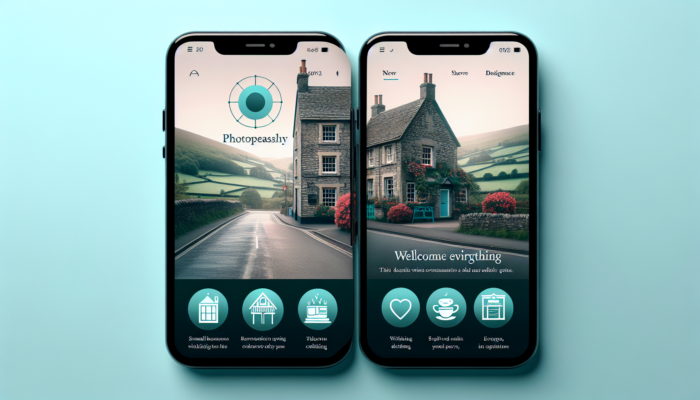Serving Social Media Search Rankings and surrounding areas for over 25 years.
Trusted by local business for reliable website design, SEO services and Digital Marketing in Somerset, Dorset, Devon, Wiltshire and Gloucestershire. 30 years of online marketing experience across the world.
Table of Contents
ToggleEssential Components for Effective Social Media Optimisation
Enhancing Content Quality and Relevance for Maximum Impact

Optimise for Social Media Search Rankings: To significantly enhance your social media search rankings, it is essential to focus on creating high-quality and relevant content. Content that resonates deeply with your audience not only drives engagement but also boosts your visibility across various social platforms. The ultimate goal is to deliver value that captures attention and motivates users to share your posts, thereby broadening your reach. Prioritise content authenticity while ensuring the tone reflects your brand’s unique personality. A well-researched and skillfully crafted post can lead to a remarkable increase in interaction rates and improved search rankings.
Consider implementing the following content strategies to elevate your social media presence:
- Creating informative blog posts that effectively address common inquiries within your niche.
- Utilising storytelling techniques to make your content more relatable and engaging for users.
- Incorporating user-generated content to build a sense of community and foster trust.
- Regularly refreshing your content to ensure it remains relevant and engaging.
- Employing a diverse range of formats, including videos, infographics, and live streams, to accommodate various user preferences.
- Encouraging audience involvement through polls and surveys to stimulate interaction.
By adopting these strategies, you not only enhance the quality of your content but also increase its likelihood of being shared, which is crucial for achieving optimal social media search rankings.
Audio More Convenient?
Strategically Using Hashtags and Staying Trend-Savvy
Harnessing the power of hashtags can dramatically increase your reach across social media platforms. When employed strategically, hashtags act as a vital tool for categorising your content, enabling users to locate it with ease. Staying up-to-date with trending topics is crucial for improving your content's discoverability. Hashtags can link your posts to broader conversations, allowing your audience to engage with your brand in a more meaningful manner.
To optimise your hashtag strategy effectively, consider incorporating these popular hashtag categories:
- Industry-specific hashtags that cater specifically to your niche audience.
- Branded hashtags are designed to promote your unique content and campaigns.
- Event or seasonal hashtags that resonate with current trends.
- Challenge or movement hashtags are designed to encourage user participation.
- Location-based hashtags help attract local audiences.
- Trending hashtags that are relevant to ongoing global discussions and interests.
Thoughtfully integrating these hashtags into your posts can allow you to tap into larger conversations, thereby enhancing both visibility and engagement with your target audience.
Fostering Engagement and Interaction for Greater Visibility
Encouraging engagement through likes, comments, and shares is a fundamental aspect of improving your social media search rankings. The more interactions your post receives, the higher its perceived value becomes to social media algorithms, which can lead to increased visibility and outreach. Actively engaging with your audience cultivates a sense of community surrounding your brand, thereby fostering loyalty and trust. A vibrant online presence is built on active interaction, prompting users to feel more connected to your content.
To amplify engagement, consider implementing the following strategies:
- Respond promptly to comments and messages to demonstrate that you value your audience’s input.
- Asking open-ended questions to stimulate discussions in the comments section.
- Running contests or giveaways that encourage users to share your content with their networks.
- Creating content that sparks debate or encourages sharing among users.
- Utilising live streams to interact with your audience in real time, enhancing connection.
- Highlighting community members or sharing customer stories to foster personal connections.
These methods help establish a two-way relationship with your audience, enhancing their loyalty while simultaneously improving your overall social media search rankings.
Maximising Profile Optimisation and Consistency Across Platforms

Ensuring your social media profiles are fully optimised and maintain consistency across all platforms is crucial for enhancing your brand's visibility and credibility. A well-optimised profile serves as the face of your brand, creating a strong first impression for new visitors. Key elements include your profile picture, bio, and links, all of which should work cohesively to communicate your brand identity effectively.
Focus on the following key elements to ensure your profiles are optimally configured:
- Use a professional profile picture that aligns with your brand image.
- Crafting a clear and concise bio that incorporates relevant keywords.
- Adding links to your website or landing pages to drive traffic effectively.
- Utilising consistent branding elements, such as logos and colour schemes, across all platforms.
- Keeping profile information updated to reflect any changes in your business or offerings.
- Including calls to action that encourage visitors to engage further with your brand.
By maintaining a professional and consistent presence across social media, you reinforce your brand identity, ultimately improving trust and enhancing search rankings.
Insights from Experts on Optimising for Social Media Search Rankings
What Are the Proven Best Practices for Social Media Optimisation?
Grasping the best practices of social media optimisation can help you enhance your online presence effectively. The social media landscape is constantly evolving, making it essential to stay informed about the latest and most effective strategies. Best practices encompass understanding the algorithms that dictate visibility and crafting content that resonates with your audience.
Proven optimisation techniques include:
- Regularly analysing your audience’s behaviour and preferences to tailor your content accordingly.
- Using A/B testing to determine which types of content yield the best results.
- Creating a content calendar to maintain a consistent posting schedule.
- Engaging with trending topics and aligning your content with current events.
- Collaborating with other brands or influencers to access new audiences.
- Employing SEO techniques to boost your content's discoverability on search engines.
By implementing these best practices, you can fine-tune your social media strategies, thereby enhancing your overall presence and search rankings.
How Can You Effectively Measure the Success of Your Optimisation Efforts?

Measuring the impact of your optimisation efforts is vital for continuous improvement. Leveraging analytics tools enables you to track your progress effectively, providing valuable insights into which strategies are working and which areas require adjustment. Metrics such as engagement rates, follower growth, and content reach are essential indicators of your success.
To ensure you maximise the potential of your analytics, concentrate on the following:
- Setting clear goals and KPIs for your social media strategy to measure success accurately.
- Regularly reviewing data to identify trends and patterns in user behaviour.
- Comparing performance across different platforms to determine where to focus your efforts.
- Utilising tools like Google Analytics, Hootsuite, or native analytics from social platforms.
- Adjusting your strategy based on insights gathered from performance reviews.
- Conducting surveys to obtain qualitative feedback from your audience.
By actively measuring your efforts, you can make informed decisions that lead to improved engagement and enhanced search rankings.
What Role Does Content Frequency Play in Engagement and Visibility?
Maintaining a regular posting schedule can significantly keep your audience engaged and improve your search rankings. A consistent posting frequency signals to algorithms that your account is active, which can enhance your visibility across social platforms. However, it is crucial to strike the right balance between quality and quantity. Posting too frequently may overwhelm your audience, while infrequent posts can lead to disengagement.
To optimise your posting frequency, consider these strategies:
- Establishing a consistent schedule that aligns with the times when your audience is most active.
- Prioritising high-quality content over sheer volume to maintain audience interest.
- Utilising scheduling tools to plan and automate posts for optimal timing.
- Experimenting with different posting frequencies to discover what resonates best with your audience.
- Monitor engagement metrics to adjust your schedule as needed.
- Incorporating a variety of content types to sustain audience interest over time.
By balancing high-quality content with a consistent posting schedule, you can enhance your social media presence while also improving your search rankings.
How Does Engagement Impact Social Media Search Rankings?
Engagement metrics, including likes, comments, and shares, can significantly influence your social media search rankings. Higher engagement rates signal to algorithms that your content is valuable, leading to increased visibility. Creating engaging content encourages users to interact with your posts, fostering a sense of community and enhancing your brand's credibility.
To effectively boost engagement, implement the following tactics:
- Creating content that encourages user interaction, such as polls or thought-provoking questions.
- Responding to comments and messages promptly to foster community engagement.
- Utilising visually appealing content that captures attention and encourages interaction.
- Encouraging followers to share their experiences with your brand openly.
- Running contests or challenges that incentivise user participation and sharing.
- Regularly analyse engagement metrics to refine your approach based on feedback.
By concentrating on engagement, you not only improve your social media visibility but also cultivate a loyal community around your brand.
Effective Strategies for Enhancing Your Social Media Profiles
Optimising Profile Information for Better Discoverability
Ensuring your profile information is complete and keyword-optimised is vital for improving your search rankings. A well-structured profile serves as the cornerstone of your social media presence. Incorporating relevant keywords within your bio and descriptions enhances your visibility in search results, making it easier for users to discover your content.
Strategies for optimising your profile information include:
- Including targeted keywords related to your niche within your bio.
- Crafting a compelling description that highlights your brand’s unique selling points and offerings.
- Linking to your website or relevant landing pages for additional context and traffic.
- Utilising consistent branding elements, such as colours and logos, across all platforms.
- Regularly update your profile information to reflect any changes in your brand or services.
- Highlighting key achievements or milestones to build credibility and trust with your audience.
By optimising your profile information, you enhance your discoverability and establish a professional online presence that effectively resonates with your audience.
Utilising Visuals and Multimedia for Enhanced Engagement
Incorporating high-quality visuals and multimedia content can significantly enhance engagement and shareability. High-resolution images and engaging videos attract more views and motivate users to interact with your posts, which in turn positively impacts your social media search rankings. Visual content often communicates messages more effectively than text alone, making it a critical component of your optimisation strategy.
To leverage visuals effectively, consider the following strategies:
- Use high-resolution images that closely align with your brand’s identity and aesthetic.
- Incorporating videos to provide informative or entertaining content that captures attention.
- Utilising infographics to present data in an engaging and easily digestible format.
- Creating GIFs or animations to add dynamic elements to your posts that resonate with users.
- Leveraging platform-specific features such as Stories or Reels for immersive visual storytelling.
- Encouraging user-generated content to increase authenticity and boost engagement.
By prioritising visuals and multimedia, you capture attention effectively while enhancing the shareability of your content, which is crucial for improving search rankings.
Leveraging Platform-Specific Features for Greater Engagement
Take full advantage of platform-specific features such as stories, polls, and live videos to amplify your visibility. Each social media platform offers unique tools designed to engage users in diverse ways. Staying updated with new features allows you to maintain a competitive edge, ensuring your content remains relevant and engaging.
Strategies for leveraging social media features include:
- Utilising Stories to share timely updates and glimpses of behind-the-scenes content.
- Creating polls to encourage audience interaction and gather valuable feedback.
- Hosting live videos to engage with your audience in real-time and answer questions.
- Experimenting with platform-specific content types, such as IGTV or TikTok videos, for a broader reach.
- Use hashtags and location tags strategically to increase your content's discoverability.
- Engaging with trends that align with your brand to attract new audiences and boost visibility.
By fully utilising social media features, you can create dynamic content experiences that resonate with users, driving engagement and improving search rankings.
The Influence of Social Media Algorithms on Content Visibility
How Do Algorithms Influence Your Search Rankings?
Social media algorithms play a pivotal role in determining the visibility of your content. Each platform employs intricate algorithms to decide which posts to display to users, based on factors such as engagement, relevance, and user behaviour—understanding how these algorithms function allows you to tailor your content strategies for improved rankings.
Factors that influence algorithms include:
- The number of interactions your content garners shortly after posting.
- The relevance of your content to the interests of your target audience.
- The frequency with which users engage with your content compared to other posts.
- The type of content, as algorithms may favour different formats.
- User behaviour, including their engagement history with your posts.
- Timeliness of content, as recent posts often receive higher visibility.
By understanding these factors, you can create content that aligns with algorithmic preferences, thereby enhancing your search rankings.
What Steps Can You Take to Adapt to Changes in Algorithms?
Remaining adaptable to algorithm changes is critical for sustaining your search rankings. Social media platforms frequently update their algorithms, which can affect your visibility and engagement. Keeping a close watch on these updates and adjusting your approach accordingly will help you navigate fluctuations in reach and interaction.
To effectively adapt to algorithm changes, consider these strategies:
- Regularly reviewing your analytics to identify any sudden drops in engagement.
- Staying informed about industry news and updates from social media platforms regarding algorithm changes.
- Experimenting with various content types to ascertain what performs best following updates.
- Engaging actively with your audience to encourage interaction and boost visibility.
- Maintaining a flexible content calendar to allow for swift adjustments as needed.
- Collaborating with other creators to diversify your content offerings and reach.
By adopting an adaptable strategy, you can continue to engage and reach your audience, regardless of algorithm shifts.
Understanding the Importance of User Behaviour in Algorithms
User behaviour, including engagement and dwell time, significantly influences how algorithms rank your content. Higher engagement rates signal to algorithms that your content is valuable, leading to improved visibility on user feeds. Understanding the factors that drive engagement can help you create content that resonates more effectively with your audience.
Key aspects of user behaviour that impact algorithms include:
- The frequency and duration of interactions with your posts.
- How quickly users engage with your content after it’s posted.
- The number of saves or shares your posts receive indicates value.
- User comments, as thoughtful discussions, suggest deeper engagement.
- Overall audience retention reflects the effectiveness of your content strategy.
- Recency of interactions, where recent engagement has a more significant impact on visibility.
By focusing on fostering positive user interactions, you can enhance your social media search rankings while building a loyal community around your brand.
Proven Strategies for Optimising Social Media Search Rankings
Establishing a Strong Social Media Presence
Building a robust social media presence can significantly enhance your search engine rankings. A strong presence not only increases your visibility but also cultivates credibility and trust among your audience. Concentrating on building a loyal follower base and maintaining consistent activity is essential for achieving long-term success.
Actionable steps for establishing a strong presence include:
- Defining a clear brand voice and aesthetic that resonates with your target audience.
- Post consistently to keep your audience engaged and informed about your brand.
- Engaging with followers by responding promptly to comments and messages.
- Collaborating with other brands or influencers to expand your reach and visibility.
- Utilising analytics to gain insights into your audience and tailor content accordingly.
- Producing valuable content that addresses your audience's needs and interests effectively.
By focusing on these strategies, you can cultivate a robust social media presence that enhances your search engine rankings and effectively engages your audience.
Collaborating with Influencers and Brands for Greater Reach
Partnering with influencers and other brands can widen your audience reach and enhance your visibility. Collaborations expose your content to new audiences, leveraging the established trust that influencers have with their followers. Choosing collaborations that align with your brand values is crucial for ensuring authenticity and effectiveness.
Consider these strategies for successful collaborations:
- Identifying influencers whose audience aligns closely with your target demographic.
- Creating co-branded campaigns that resonate with both audiences for mutual benefit.
- Utilising giveaways or contests to encourage engagement and sharing among followers.
- Collaborating on content that provides value to both parties' audiences, enhancing reach.
- Sharing insights or experiences during joint live sessions or webinars.
- Monitoring the success of collaborations to refine future partnerships for better outcomes.
By strategically collaborating with influencers and brands, you can expand your reach and influence, ultimately leading to enhanced search rankings.
Maximising Impact with Paid Advertising
Paid advertising can help you reach a larger audience and significantly improve your search rankings. With well-defined targeting, advertising can amplify your reach, ensuring your content is seen by those most likely to engage with it. It serves as an effective means to push your content to the forefront of social media feeds, particularly when organic reach may be limited.
To maximise your paid advertising efforts, consider the following strategies:
- Defining clear objectives for your campaigns, such as brand awareness or conversions.
- Utilising A/B testing to refine ad content and targeting strategies for optimal performance.
- Investing in retargeting ads to reach users who have previously interacted with your brand.
- Leveraging social media tools for precise audience segmentation to improve ad effectiveness.
- Monitoring ad performance closely to adjust budgets and targeting as needed for maximum impact.
- Incorporating compelling visuals and strong calls to action to enhance ad effectiveness and appeal.
By effectively utilising paid advertising strategies, you can substantially enhance your visibility and improve your overall search rankings on social media.
Integrating SEO into Social Media Optimisation
Incorporating SEO Techniques into Social Media Strategies
Applying SEO principles to your social media content can significantly bolster your search rankings. Utilising strategic keywords within your posts and profiles not only enhances discoverability but also aligns your content with users' active search queries. A well-optimised social media profile can greatly improve your visibility on both social platforms and search engines.
Key techniques for integrating SEO into social media include:
- Conducting thorough keyword research to identify terms your audience is searching for.
- Incorporating these keywords naturally into your bio, posts, and content descriptions.
- Utilising alt text for images to improve accessibility and enhance discoverability.
- Linking back to your website or blog within your posts to drive traffic and engagement.
- Employing hashtags that include relevant keywords to improve searchability and reach.
- Engaging in discussions on trending topics that align with your keywords for relevancy.
By integrating these SEO techniques, you can elevate your content's visibility, driving increased traffic and engagement through social media channels.
How Does SEO Influence Social Media Visibility?
SEO can have a profound impact on your social media visibility by enhancing the discoverability of your content. Optimised posts that align with popular search queries can attract more visitors, leading to higher engagement and interaction rates. As social media and SEO become increasingly intertwined, leveraging both becomes essential for a comprehensive strategy.
The impact of SEO on social media visibility can be observed through:
- Higher rankings in search results lead to increased organic traffic to your profiles.
- Improved audience targeting through effective keyword optimisation.
- Enhanced content shareability, driving more interactions and engagement from users.
- Greater brand recognition and trust through consistent visibility across multiple platforms.
- Increased opportunities for backlinks from social shares to your website, improving SEO.
- Facilitated connections with users actively searching for your niche content.
By understanding how SEO influences social media visibility, you can create a cohesive strategy that maximises your reach and effectiveness.
The Synergy Between SEO and Social Media Optimisation
Recognising the synergy between SEO and social media can empower you to develop a cohesive optimisation strategy. Both disciplines complement each other, with social media serving as a powerful vehicle for driving traffic and engagement, which in turn enhances SEO efforts. A unified approach ensures that both strategies reinforce one another, maximising overall effectiveness and reach.
Strategies to integrate SEO and social media include:
- Sharing optimised blog posts on social media to drive traffic and improve search rankings.
- Utilising social media analytics to inform SEO keyword strategies for greater alignment.
- Encouraging social sharing of your web content to build backlinks and improve authority.
- Creating shareable content that naturally aligns with SEO best practices and user interests.
- Engaging actively with your audience on social media to understand the content they seek.
- Monitor how social signals impact your SEO performance over time to facilitate continuous improvement.
By leveraging the synergy between SEO and social media, you can establish a more robust online presence that effectively drives both engagement and search rankings.
Evaluating the Success of SEO in Social Media
To evaluate how SEO enhances your social media presence, it's essential to track key metrics. Understanding the relationship between your SEO efforts and social media performance is vital for refining your strategies. Metrics such as referral traffic, engagement rates, and search rankings can provide insights into the effectiveness of your combined efforts.
Metrics to consider when measuring success include:
- Analysing referral traffic from social media to your website, indicating content effectiveness.
- Tracking engagement metrics on posts that utilise SEO techniques for insights.
- Comparing keyword rankings with social media visibility over time to identify trends.
- Assessing the impact of social shares on overall SEO performance and visibility.
- Monitoring audience growth in response to SEO-driven content for adjustments.
- Reviewing the effectiveness of calls to action in driving user engagement and interactions.
By diligently measuring these metrics, you can gain valuable insights that refine your SEO and social media strategies, ultimately leading to increased visibility and engagement across platforms.
Techniques for Content Creation and Optimisation
Crafting Compelling Content that Captivates Your Audience
Creating content that resonates with your audience is crucial for enhancing your search engine rankings. Compelling content that tells a captivating story or provides valuable insights can drive higher engagement rates, resulting in improved visibility on social media platforms. Focus on understanding your audience's needs and preferences to create content that sparks interest and interaction.
Consider these tips for crafting compelling content:
- Identifying your audience’s pain points and addressing them effectively within your content.
- Using storytelling techniques to create emotional connections with your audience.
- Incorporating practical, actionable advice that readers can readily implement.
- Utilise a conversational tone to make your content relatable and engaging.
- Including strong visuals or infographics to enhance understanding and retention.
- Encouraging audience participation through comments and feedback fosters a sense of community.
By prioritising the creation of compelling content, you can significantly enhance engagement and improve your social media search rankings.
Optimising Content for Different Social Media Platforms
Each social media platform has unique optimisation requirements. Tailoring your content to meet the specific needs of each platform will improve your rankings and engagement. Understanding the nuances of each platform ensures your content is presented most effectively.
Key considerations for optimising content across platforms include:
- Adapting post formats to suit platform preferences, such as videos for TikTok and images for Instagram.
- Utilising platform-specific features, like hashtags on Twitter or Stories on Instagram, to increase engagement.
- Adjusting post length according to platform norms, such as shorter posts on Twitter for clarity.
- Considering audience demographics on each platform to tailor messaging accordingly.
- Engaging actively with platform-specific communities and trends to enhance visibility.
- Monitoring platform analytics to continually refine your approach for optimal results.
By optimising for each platform, you can effectively maximise the impact of your content and improve your overall search rankings.
What Are the Latest Trends in Content Optimisation?
Staying informed about the latest trends can help you keep your content relevant and optimised. The digital landscape is constantly evolving, and adapting to new trends will ensure your content remains engaging and competitive. Recognising and leveraging these trends can significantly enhance your social media presence and interaction rates.
Current trends in content optimisation include:
- Incorporating interactive content, such as quizzes and polls, can boost engagement and participation.
- Utilising video content to capture attention and convey messages effectively.
- Emphasising user-generated content to build trust and authenticity within your brand community.
- Implementing augmented reality (AR) and virtual reality (VR) experiences for immersive storytelling.
- Utilising long-form content to provide in-depth insights and value that resonate with your audience.
- Focusing on sustainability and social responsibility themes to align with audience values and interests.
By staying abreast of these trends, you can ensure your content is optimised for maximum engagement and visibility across social media platforms.
Monitoring and Analysing Performance Effectively
Utilising Analytics Tools to Gain Insights
Employing analytics tools can provide valuable insights into your social media performance. These tools allow you to track key metrics that inform your strategies, helping you understand what content resonates with your audience and where improvements are essential. Regularly analysing this data is crucial for optimising your social media efforts and enhancing search rankings.
Key metrics to monitor using analytics tools include:
- Engagement rates, including likes, shares, and comments, are used to measure audience interaction and engagement.
- Follower growth and demographics to better understand your audience's composition.
- Traffic referrals from social media to your website for assessing content effectiveness.
- Content reach and impressions to evaluate visibility among users.
- Conversion rates from social media efforts to assess overall effectiveness.
- Post performance comparisons to identify high and low-performing content.
By effectively utilising analytics tools, you can make data-driven decisions that enhance your social media strategy and improve search rankings.
How Can You Leverage Data to Improve Your Strategy?
Leveraging data is key to refining your optimisation strategy. Understanding the relationship between your content and audience engagement is vital for continuous improvement. Data analysis empowers you to make informed decisions that enhance your social media performance and overall effectiveness.
Key approaches for using data to improve your strategy include:
- Identifying content types that yield the highest engagement rates for optimisation.
- Adjusting posting times based on when your audience is most active for maximum visibility.
- Utilising A/B testing to evaluate variations in content and assess engagement rates.
- Monitor audience feedback to adapt your content to their preferences and interests.
- Adjusting your strategies based on performance trends over time to stay relevant.
- Setting measurable goals based on previous data to track progress and improvements.
By actively using data to inform your strategy, you can effectively enhance social media engagement and improve search rankings.
The Importance of Regular Performance Reviews
Conducting regular performance reviews is vital for maintaining and improving your search rankings. These reviews enable you to identify areas for growth and optimisation. By assessing your efforts and making necessary adjustments, you ensure your social media strategy remains effective and aligned with your goals.
Aspects to consider during performance reviews include:
- Analysing engagement trends to identify what resonates most with your audience.
- Reviewing content performance to determine what to replicate or adjust for future posts.
- Assessing follower growth and retention to gauge audience satisfaction.
- Evaluating the impact of algorithm changes on your content visibility over time.
- Setting new goals based on prior performance to encourage continual growth and improvement.
- Gathering feedback from your audience to understand their needs and preferences better.
By conducting these reviews regularly, you can maintain a proactive approach to your social media strategy, ultimately enhancing your search rankings effectively.
Establishing Performance Benchmarks for Progress Measurement
Establishing clear performance benchmarks is essential for measuring your progress and success. Benchmarks provide a reference point against which to evaluate your social media efforts, helping you set realistic goals and track improvements over time. Regularly reviewing these benchmarks will guide your future strategies and inform decision-making.
Key metrics for setting performance benchmarks include:
- Engagement rates for posts over a specified period to gauge effectiveness.
- Follower growth rate is measured monthly or quarterly to understand audience trends.
- Traffic referrals from social media to landing pages or websites for conversion assessment.
- Average reach per post to assess visibility within user feeds.
- Conversion rates from social media campaigns or posts to measure effectiveness.
- Content shareability rates to gauge audience interest and engagement.
By establishing and monitoring performance benchmarks, you can ensure that your social media efforts remain aligned with your objectives and continue to improve over time.
Adapting to Emerging Performance Trends for Continuous Improvement
Stay agile by adapting your strategy to emerging performance trends. The social media landscape is ever-changing, and the ability to pivot quickly can help you maintain a competitive edge. Regularly assessing trends ensures your approach remains effective and relevant within the dynamic online environment.
To effectively adapt to performance trends, consider:
- Conducting periodic reviews of your analytics to identify emerging patterns and insights.
- Adjust your content strategy to align with trending topics or formats for relevance.
- Listening to audience feedback to identify new content directions and preferences.
- Staying updated with industry changes to anticipate shifts and adapt strategies accordingly.
- Experimenting with new content types or platforms based on performance data and audience interests.
- Utilising insights gained from past performance to inform future strategies and content planning.
By remaining agile and responsive to trends, you can maximise your social media effectiveness and continually improve your search rankings over time.
Frequently Asked Questions
What Are Social Media Search Rankings and Their Importance?
Social media search rankings refer to the visibility of posts on social media platforms, determined by algorithms, engagement, and relevance to users' interests. Higher rankings lead to increased exposure and more opportunities for engagement.
How Can I Effectively Improve My Social Media Search Rankings?
To enhance your rankings, focus on improving content quality, optimising your profile information, increasing audience engagement, and leveraging hashtags effectively to reach a wider audience.
Do Hashtags Really Influence Visibility on Social Media Platforms?
Yes, hashtags categorise your content, making it easier for users to discover it. Using trending and relevant hashtags can significantly boost visibility and lead to greater engagement with your posts.
What Role Does Engagement Play in Achieving Social Media Success?
Engagement signals to algorithms that your content is valuable and relevant. Higher engagement rates typically lead to improved visibility and search rankings, enhancing your overall social media success.
How Often Should I Post on My Social Media Accounts?
The ideal posting frequency varies by platform and audience preferences. Generally, consistency is key—aim to maintain a regular schedule without sacrificing the quality of your content.
Which Analytics Tools Should I Use to Measure My Social Media Performance?
Tools such as Google Analytics, Hootsuite, and native analytics provided by social platforms can offer valuable insights into your social media performance, tracking key metrics and engagement over time.
Can SEO Practices Be Effectively Applied to Social Media?
Absolutely. Applying SEO techniques, such as keyword optimisation and content strategy alignment, can significantly enhance your social media visibility and overall effectiveness in reaching your target audience.
How Can I Determine If My Social Media Strategy Is Working?
Regular performance reviews, combined with tracking engagement metrics and follower growth rates, can provide valuable insights into the effectiveness of your strategy and highlight areas that need adjustment.
What Are the Latest Trends in Social Media Content Creation?
Recent trends include the incorporation of interactive content, video marketing, user-generated content, and a focus on sustainability and social responsibility themes to resonate with modern audiences.
Is Collaborating with Influencers Beneficial for My Brand?
Yes, collaborating with influencers can effectively expand your reach, enhance brand credibility, and introduce your content to new audiences, ultimately improving visibility and engagement on social media platforms.


















3 Comments
I really appreciate the insights you’ve shared here regarding effective social media optimization! Your emphasis on the importance of creating high-quality, relevant content resonates deeply with me. It’s interesting to consider how much social media has shifted over the years; what once seemed like a platform for light-hearted engagement has transformed into a powerful tool for brand strategy and audience connection.
Thank you for outlining the fundamental aspects of social media optimization and the emphasis on the importance of content quality and relevance. It’s refreshing to see a focus on the authenticity of content, as this is often overlooked in the race for engagement metrics. Creating meaningful connections through genuine content really does resonate more effectively with audiences today who are increasingly discerning about the material they engage with.
I really appreciate the emphasis you placed on content quality and relevance—it can’t be overstated how crucial these elements are in our fast-paced digital landscape. In my experience, creating content that not only informs but also resonates emotionally with the audience is key. For instance, I’ve noticed that sharing behind-the-scenes stories or user-generated content tends to foster a deeper connection with followers. When people see themselves reflected in your brand, it boosts engagement and encourages them to share.